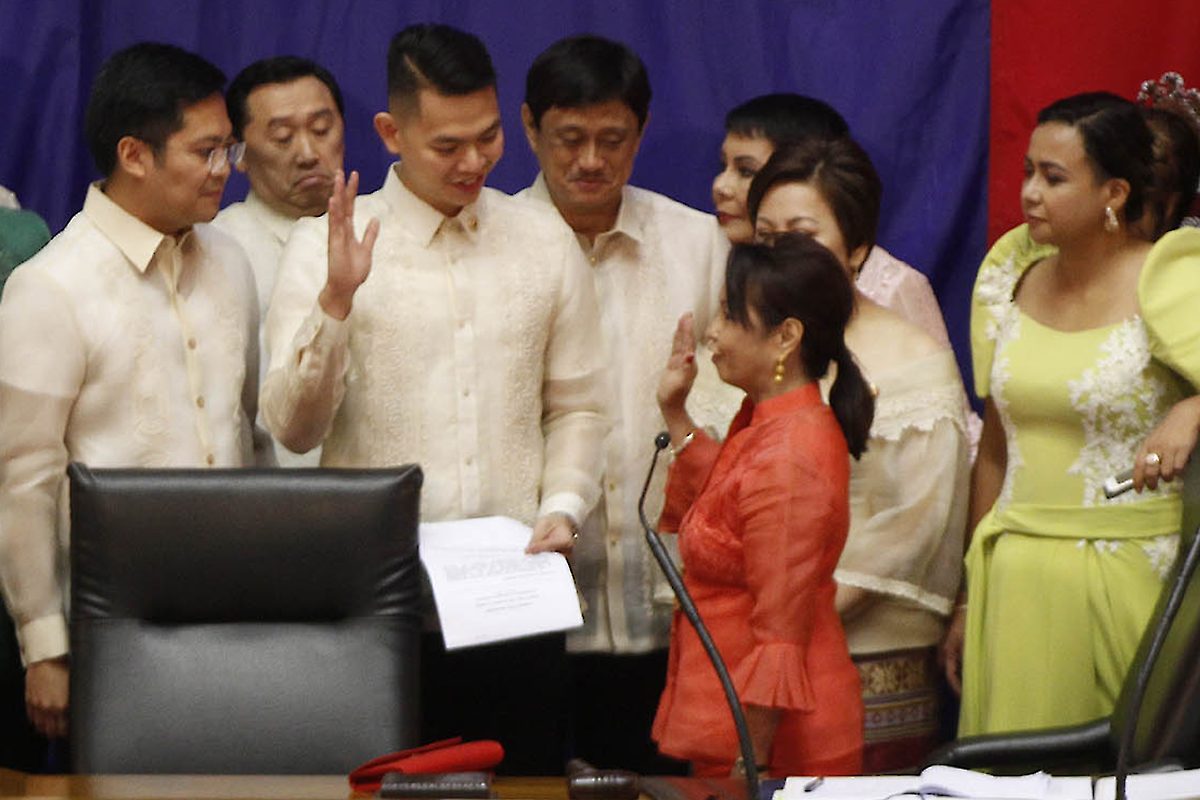SUMMARY
This is AI generated summarization, which may have errors. For context, always refer to the full article.

MANILA, Philippines – Can Pantaleon Alvarez oust Gloria Macapagal-Arroyo as House Speaker through a quo warranto petition?
He can try, but precedent is not on his side.
In 1949, Senator Jose Avelino filed a quo warranto petition against Senator Mariano Cuenco in a takeover of the Senate leadership similar to what happened inside the Batasang Pambansa on Monday, July 23.
Arroyo took her oath as Speaker Monday afternoon in an apparent move to oust Alvarez.
But in 1949, the Supreme Court (SC) denied the petition 6-4 because the majority justices said the Court does not have jurisdiction over the case, given its political nature.
“If, as the petition must imply to be acceptable, the majority of the Senators want petitioner to preside, his remedy lies in the Senate Session Hall – not in the Supreme Court,” said the SC in 1949.
A crucial factor is also whether President Rodrigo Duterte will recognize Arroyo as the new leader of the lower house. In 1949, former president Elpidio Quirino recognized Cuenco as the new Senate president.
“It is furthermore believed that the recognition accorded by the Chief Executive to the respondent makes it advisable, more than ever, to adopt the hands-off policy wisely enunciated by this Court in matters of similar nature,” said the SC.
Quorum
At the session Monday morning, Alvarez delivered a speech first after which his ally, Assistant Majority Leader Juan Pablo Bondoc, moved to adjourn.
During this time, the plot to oust Alvarez was already known to everybody.
By afternoon, House members returned to the session hall and passed around a manifesto calling for the removal of Alvarez as Speaker.
Deputy Speaker Rolando Andaya said the morning session should not have been adjourned because he objected to it. While all this was happening, reporters were banned inside the session hall and audio was cut off, leaving the rest of the country trying to interpret what was going on.
Moments after, Arroyo was escorted to the podium to take her oath.
Flashback to 1949, Avelino’s ally Senator Pablo Angeles David was the one who moved to adjourn the session to avoid the ouster. The adjournment received opposition, but Avelino banged the gavel and just walked out.
While he was outside the session hall, the other senators elected Cuenca Senate president.
The Supreme Court ventured into the question of whether there was a quorum to begin with, to make the election valid. Justices argued that the old constitution required that a majority should be present to constitute a quorum.
Article VI of the 1987 Constitution similarly requires a majority to establish a quorum to do business.
“Supposing that the Court has jurisdiction, there is unanimity in the view… that a minority of ten senators may not, by leaving the Hall, prevent the other twelve senators from passing a resolution that met with their unanimous endorsement. The answer might be different had the resolution been approved only by ten or less,” said the SC.
So, if Alvarez does decide to pursue a quo warranto path against Arroyo, there’s no precedent to back him up.
But then again, the ousting of Maria Lourdes Sereno through quo warranto was also unprecedented, yet affirmed by the Supreme Court twice. – Rappler.com
Add a comment
How does this make you feel?
There are no comments yet. Add your comment to start the conversation.